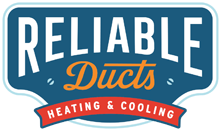Air conditioning filters play a crucial role in maintaining indoor air quality and the overall efficiency of your HVAC system. They help with catching dust, pollen, pet dander, and other airborne particles so that your house isn’t filled with them. With various air conditioning filters available, choosing the right one can be overwhelming. In this article, we’ll explore the different types of air conditioning filters commonly used in homes:
- Fiberglass Filters
Fiberglass filters are among the most common and affordable options available.They are made of fiberglass fibers that are stacked to collect bigger particles like lint and dust. While fiberglass filters are budget-friendly, they are less effective at capturing smaller particles than other filter types. They are suitable for homes with minimal air quality concerns and HVAC systems that don’t require high filtration efficiency.
- Pleated Filters
Pleated filters are an upgrade from fiberglass filters in terms of filtration efficiency. These filters feature pleated synthetic fibers that provide a larger surface area for trapping airborne particles. The pleats increase the filter’s efficiency and lifespan compared to fiberglass filters. Pleated filters are available in various MERV (Minimum Efficiency Reporting Value) ratings, indicating their ability to capture particles of different sizes. Higher MERV ratings denote better filtration, making pleated filters suitable for homes with pets, allergies, or higher air quality concerns.
- HEPA Filters
High-efficiency particulate Air (HEPA) filters are renowned for their exceptional filtration capabilities. These filters can capture up to 99.97% of particles as small as 0.3 microns, including pollen, mold spores, bacteria, and viruses. HEPA filters are commonly used in environments where air quality is critical, such as hospitals and laboratories. While they offer superior filtration, HEPA filters can restrict airflow, potentially causing strain on the HVAC system. They are recommended for individuals with severe allergies or respiratory conditions.
- Washable Filters
Reusable filters, commonly referred to as washable filters, are made to be cleaned and used again. These filters are typically made of foam or synthetic materials and can be rinsed with water or vacuumed to remove trapped particles. While washable filters reduce waste and can save money in the long run, they may not offer the same level of filtration as disposable filters. Additionally, improper cleaning or drying of washable filters can lead to mold or bacterial growth, compromising indoor air quality.
- Electrostatic Filters
Electrostatic filters use an electric charge to attract and capture airborne particles. There are washable and disposable versions of these filters. Disposable electrostatic filters have synthetic fibers with an electrostatic charge applied during manufacturing, while washable electrostatic filters utilize an electric charge generated by the airflow. Electrostatic filters are known for their high efficiency in trapping smaller particles and can be an excellent choice for homes with allergy sufferers.
In summary, selecting the right air conditioning filter for your home depends on filtration efficiency, air quality concerns, and budget. Fiberglass filters offer essential filtration at a low cost, while pleated filters provide improved efficiency. HEPA filters are ideal for those requiring the highest level of filtration, while washable and electrostatic filters offer reusable options with varying levels of efficiency.You can ensure clean and healthy indoor air for you and your family by being aware of the various types of air conditioning filters that are available.
